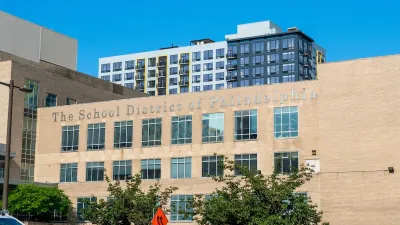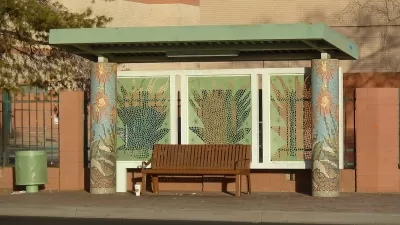California's budget now includes an unprecedented investment of $150 million to create green schoolyards and schoolyard forests at K-12 schools across the state.

There is a growing movement to transform asphalt-covered school grounds into park-like green spaces that improve children’s well-being, learning, and play while contributing to their communities' ecological health and climate resilience. The State of California, for example, recently announced that it will make available $150 million over the next two years so that school districts, nonprofits and local government agencies can apply for funding to plant trees, create gardens and other green spaces, or build shade structures on school campuses. Projects may also include planting native or drought-tolerant vegetation.
Funding from the State will enable schools to accelerate efforts to reduce the heat island effect caused by too many buildings or roads in developed areas. A key supporter of such efforts is Green Schoolyards America, which works with a variety of partners in California and across the United States to support schoolyard greening investments, policies, and programs that advance equity, climate resilience, and environmental literacy.
Green Schoolyards America also recently launched the California Schoolyard Forest System℠, a statewide initiative in partnership with the California Department of Forestry and Fire Protection (CAL FIRE) and the California Department of Education. The initiative will increase tree canopy on public school grounds across California to shade and protect PreK-12 students from extreme heat and rising temperatures due to climate change.
FULL STORY: California to invest $150 million in schoolyard greening!

Planetizen Federal Action Tracker
A weekly monitor of how Trump’s orders and actions are impacting planners and planning in America.

Map: Where Senate Republicans Want to Sell Your Public Lands
For public land advocates, the Senate Republicans’ proposal to sell millions of acres of public land in the West is “the biggest fight of their careers.”

Restaurant Patios Were a Pandemic Win — Why Were They so Hard to Keep?
Social distancing requirements and changes in travel patterns prompted cities to pilot new uses for street and sidewalk space. Then it got complicated.

Platform Pilsner: Vancouver Transit Agency Releases... a Beer?
TransLink will receive a portion of every sale of the four-pack.

Toronto Weighs Cheaper Transit, Parking Hikes for Major Events
Special event rates would take effect during large festivals, sports games and concerts to ‘discourage driving, manage congestion and free up space for transit.”

Berlin to Consider Car-Free Zone Larger Than Manhattan
The area bound by the 22-mile Ringbahn would still allow 12 uses of a private automobile per year per person, and several other exemptions.
Urban Design for Planners 1: Software Tools
This six-course series explores essential urban design concepts using open source software and equips planners with the tools they need to participate fully in the urban design process.
Planning for Universal Design
Learn the tools for implementing Universal Design in planning regulations.
Heyer Gruel & Associates PA
JM Goldson LLC
Custer County Colorado
City of Camden Redevelopment Agency
City of Astoria
Transportation Research & Education Center (TREC) at Portland State University
Camden Redevelopment Agency
City of Claremont
Municipality of Princeton (NJ)





























